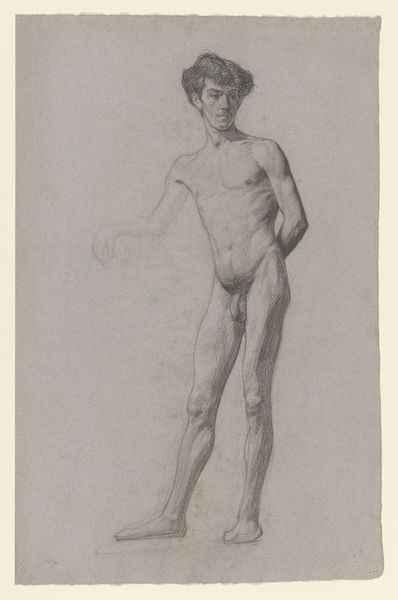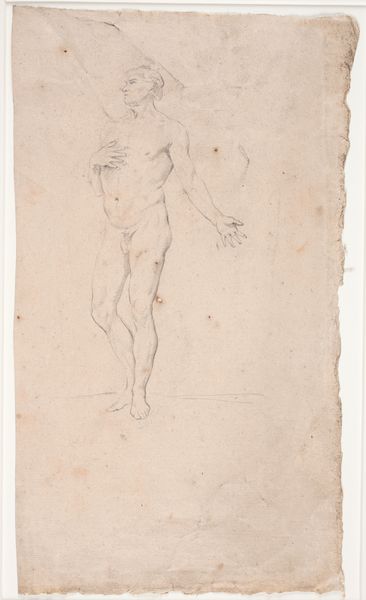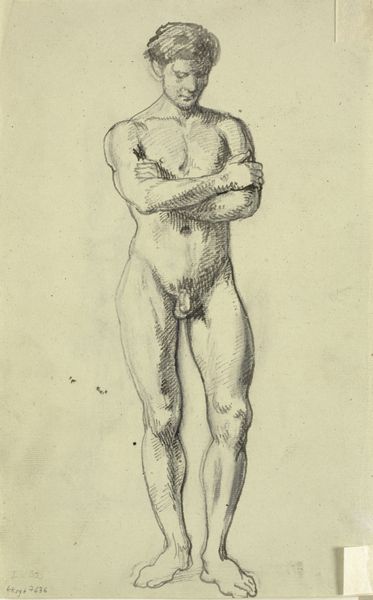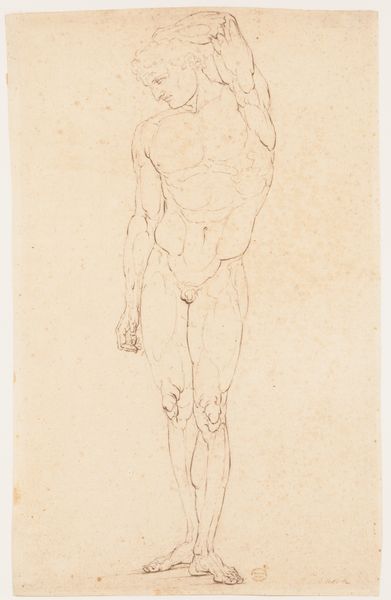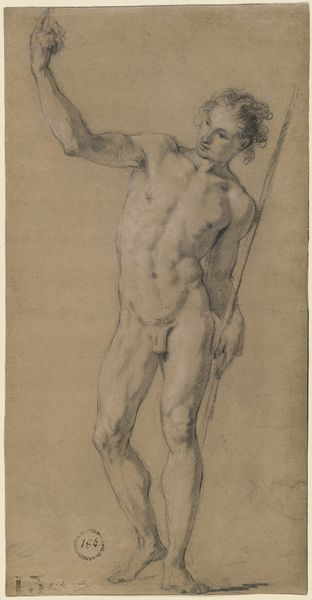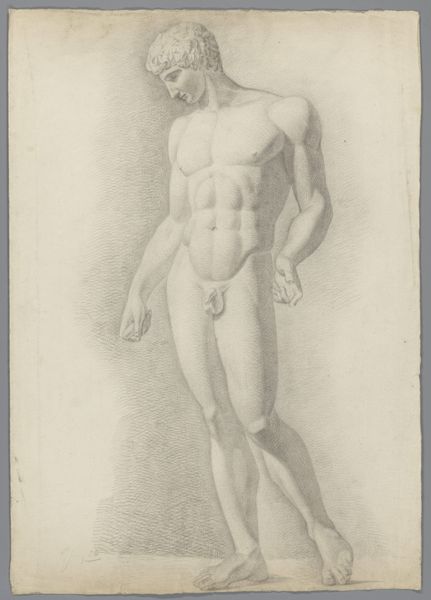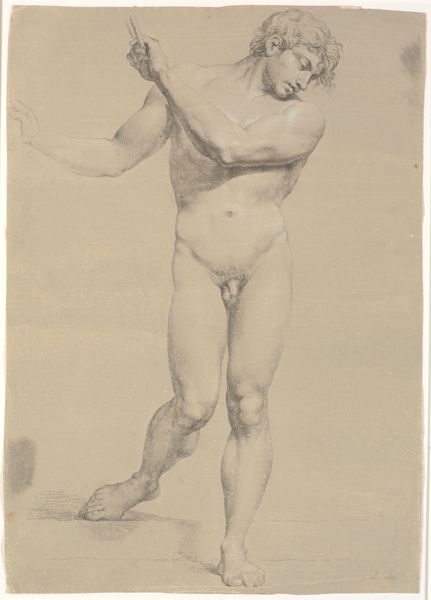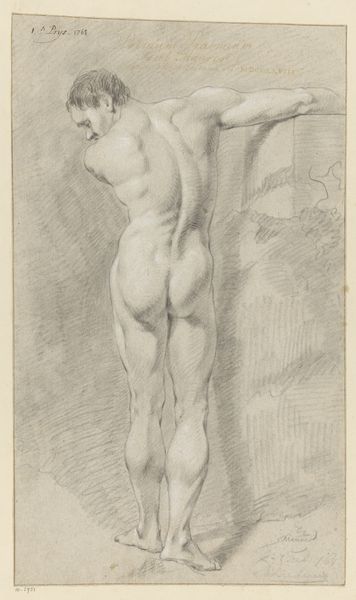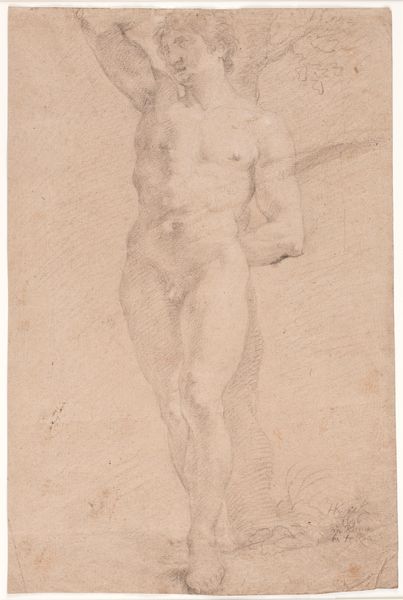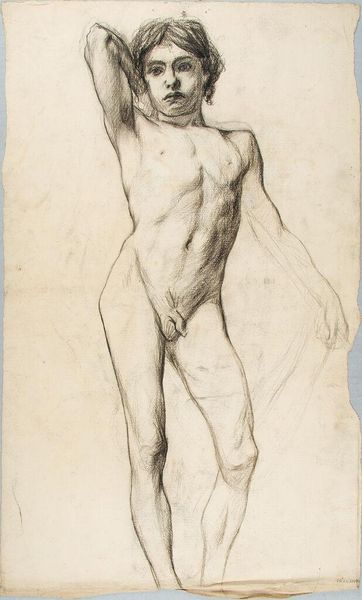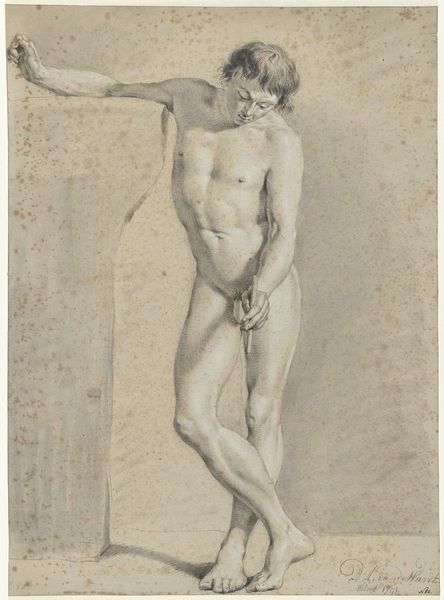
drawing, pencil
#
portrait
#
drawing
#
neoclacissism
#
pencil sketch
#
charcoal drawing
#
figuration
#
pencil drawing
#
underpainting
#
pencil
#
academic-art
#
nude
Dimensions: 22 5/8 x 16 1/8 in. (57.47 x 40.96 cm) (image)
Copyright: Public Domain
Curator: Standing before us is "Mercury," a pencil sketch likely conceived sometime in the 18th or 19th century. The piece is attributed to Pierre-Paul Prud'hon and currently resides here at the Minneapolis Institute of Art. Editor: The soft lines, almost hazy, lend an air of dreamy classicism. It's a study in idealized form, yet something about the incomplete nature makes it feel so...vulnerable. Curator: Absolutely. Prud'hon, though a contemporary of the French Revolution, adhered to the Neoclassical tradition, evident in his meticulous draftsmanship and focus on anatomical precision. See the detailed rendering of the musculature, and the almost perfect contrapposto. Editor: Beyond the formal structure, Mercury here stands for a very particular story. He is Hermes in the Greek pantheon, the messenger god—identified here by his caduceus. That rod is also a potent symbol of medicine. It makes me think of the transfer of secret knowledge, perhaps. Curator: The pose seems almost rhetorical, doesn't it? His raised hand could suggest he's mid-speech, conveying a vital message. The almost muted quality draws attention to his very role as the go-between of the Gods and the mortal realm. Editor: I agree. There's an interesting ambiguity as well. Hermes is also a trickster, associated with commerce and even thievery. Looking again, I am thinking more about him as a psychopomp, guiding souls, so the unfinished aspect feels like in-between state of being. Curator: A fitting consideration, considering its status as a preliminary study. The materiality reinforces that transience – the very ephemerality of pencil on paper seems fitting for Mercury, doesn’t it? Editor: Very true. This seemingly simple sketch brims with layered symbolism – myth, medicine, commerce – mirroring the layered personas attributed to this protean deity. Curator: Precisely. "Mercury," through Prud'hon's careful hand, becomes an exemplar of classical ideals distilled through the intimate medium of drawing. Editor: It really highlights how a study, often regarded as secondary, can be such a rich point of entry into classical mythology and Neoclassical form.
Comments
No comments
Be the first to comment and join the conversation on the ultimate creative platform.
